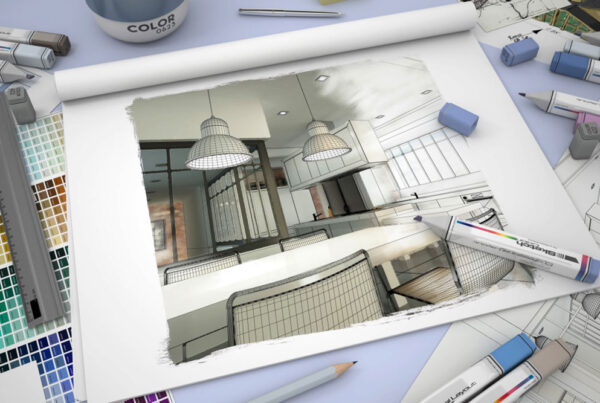Modern architecture is more than just a style—it’s a design philosophy built on simplicity, clarity, and purpose. It emerged in the early 20th century as a response to rapid industrialization, embracing innovation, clean lines, and functional spaces. Today, it remains one of the most influential and enduring architectural approaches. Here are the key principles that define modern architectural design.
1. Simplicity and Minimalism
Modern design emphasizes clean, uncluttered spaces. Decorative elements are kept to a minimum, and forms are simplified to their essential structures. This creates a sense of calm, order, and visual clarity.
2. Function Over Form
Every element in modern architecture is purposeful. The design serves the needs of its occupants, prioritizing usability and practicality over ornamentation. “Form follows function” remains a core principle.
3. Open Floor Plans
Modern architecture often favors open layouts that promote fluidity between spaces. This encourages interaction, improves natural light flow, and makes homes feel larger and more connected.
4. Use of Modern Materials
Steel, glass, concrete, and engineered wood are commonly used in modern architecture. These materials allow for bold structural elements, expansive windows, and sleek finishes.
5. Integration with Nature
Large windows, outdoor living areas, and natural materials are used to create harmony between the built environment and the surrounding landscape. Nature becomes part of the interior experience.
6. Emphasis on Light
Modern design maximizes natural light through large panes of glass, open spaces, and skylights. Light enhances the feeling of openness and adds to the clean, bright aesthetic.
7. Sustainability and Efficiency
Today’s modern architecture embraces green building practices. Efficient layouts, eco-friendly materials, solar energy, and passive design strategies are integrated to reduce environmental impact.
8. Technological Integration
Smart home features and advanced construction techniques are seamlessly integrated into modern design. From automated lighting to energy management systems, technology enhances both comfort and functionality.
Conclusion
Modern architectural design is rooted in purpose, innovation, and simplicity. It’s about creating spaces that are not only visually striking but also functional, sustainable, and connected to their environment. At DOT Architecture, we use these principles to shape spaces that reflect the way people live today—thoughtfully, efficiently, and beautifully.



